SD › Toronto Things to Do
Updated: November 16, 2019
By Santorini Dave
See Also
The 41 Best Things To Do in Toronto
-
Royal Ontario Museum
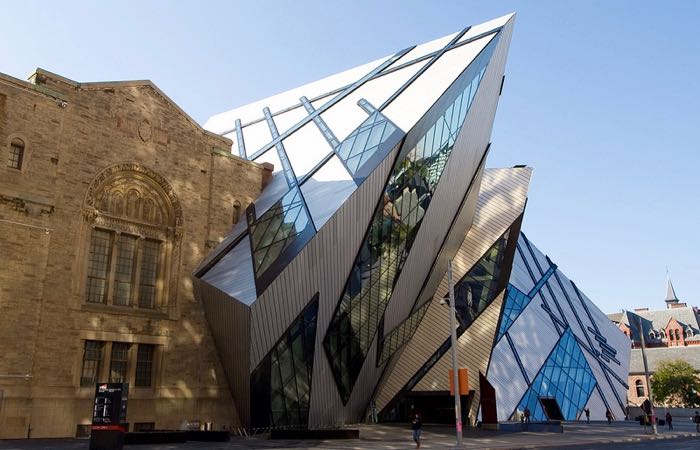
With its wild exterior shape, the Royal Ontario Museum is a major landmark in the Yorkville neighborhood. It is the largest museum in Canada with forty galleries and over six million items, covering natural history (meteorites and dinosaurs), culture (historical exhibits), and art (Near East, European, African, Canadian, and South Asian styles). The sheer wealth of offerings and its maze-like interior take time to navigate through; give yourself at least a couple of hours to browse. Check it out in fall for Friday Night Live, a seasonal event that occurs weekly from 7-11:30 p.m., featuring live music, DJs, cocktails, and a new theme each week. This event sells out often, so buy tickets a week ahead; this will also allow you to skip the line which gets crazy long when it’s cold outside.
photo credit -
Ripley’s Aquarium

Ripley’s Aquarium is home to over 16,000 underwater creatures from around the world. They are most notable for their Dangerous Lagoon gallery, which has the longest underwater tunnel and moving sidewalk, filled with sharks, sawfish, and sea turtles. They have several freshwater and saltwater tanks, plus interactive exhibits and touch tanks with rays, crabs, and sharks. Interactive dive shows are scheduled every two hours. The aquarium is open seven days a week, 365 a year, usually from 9 a.m. to 11 p.m. (there’s a cheaper ticket for access after 7 p.m.)
photo credit -
Niagara Falls
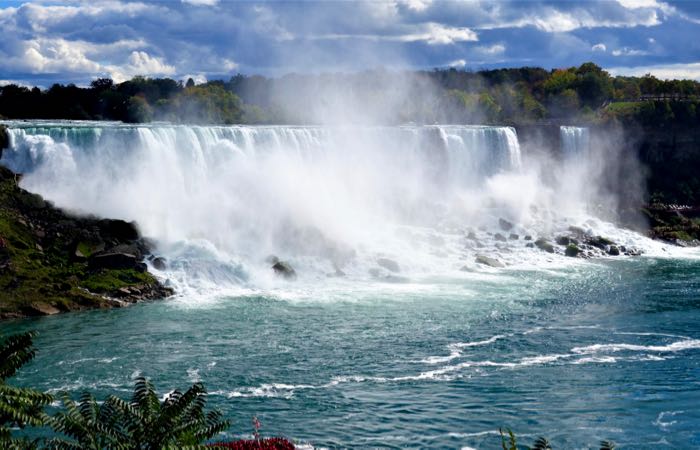
Straddling the Canada-U.S. border, Niagara Falls is the name given for three waterfalls on the Niagara River: The largest of the three, Horseshoe Falls lies mostly on the Canadian side, while the smaller American Falls and Bridal Veil Falls are on the U.S. side. Collectively, Niagara Falls has the highest flow rate of all waterfalls worldwide. Located 120 km outside of Toronto, you’ll probably want to rent a car for a day to get there or take a guided bus tour. While you’re there, do walk across to the dry side of Niagara Parkway across the street from Horseshoe Falls, to find the Nikola Tesla statue. -
Second City Toronto
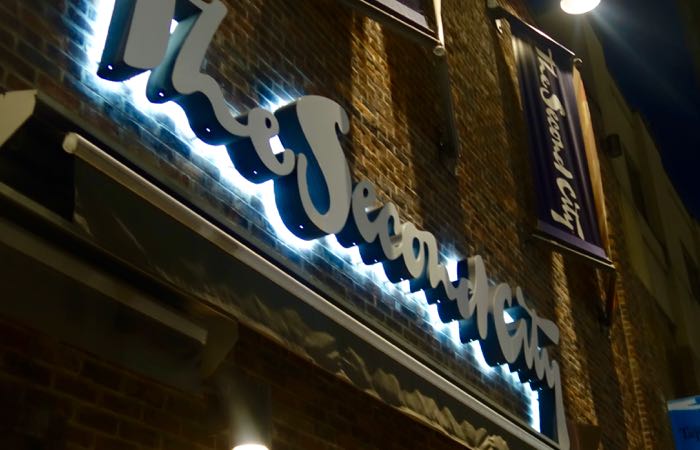
Since the ‘70s, Toronto’s branch of The Second City (other stages are in Chicago and Hollywood) has been churning out comedic geniuses that include Dan Aykroyd, John Candy, Gilda Radner, Mike Myers, and Scott Thompson, among many, many others. Improv and sketch comedy shows run every night. Drinks and food can be ordered at any time during the show, delivered to your seat. They also partner with Wayne Gretsky’s restaurant next door; you can add a meal from there to your ticket purchase over the phone or online. The shows sell out regularly, so buy in advance. If seating in general admission, plan on arriving early to claim your seats, especially if attending with a group. -
Bata Shoe Museum
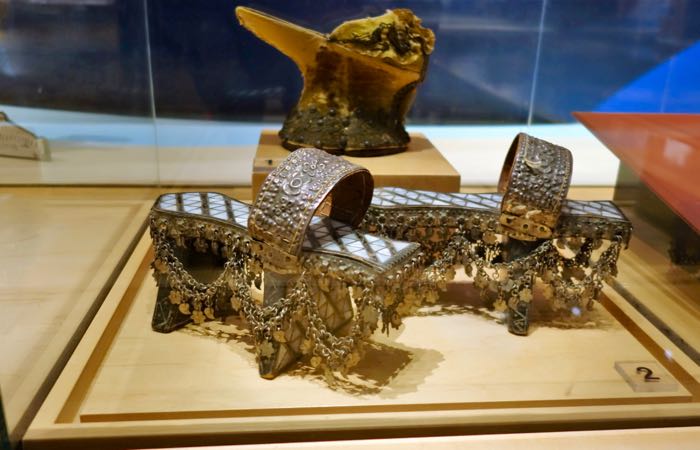
It’s fitting that a museum devoted to shoes would be located in Yorkville, Toronto’s fashion-forward shopping mecca. Bata Shoe Museum focuses on footwear from around the world and throughout time. Four exhibits are on display at any given time, one of which is fairly permanent and covers a general overview on the history of shoes for the past 4500 years, including Chinese silk shoes for bound feet and a huge collection of Native American and Arctic footwear. Among their celebrity shoes, you’ll find the Dalai Lama’s flip flops, Marilyn Monroe’s high heels, and Elton John’s platforms. The museum is open every day of the year, except Christmas and Good Friday. Admission is $14, except on Thursday evenings when it’s “pay what you can,” with a suggested donation of $5. -
West Queen West
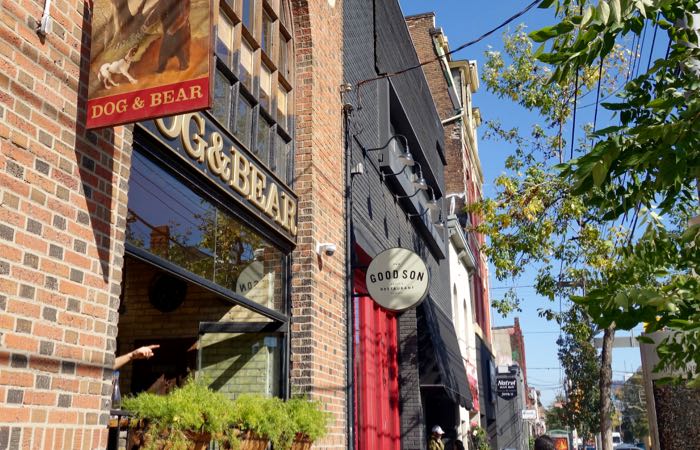
Easily the coolest neighborhood in Toronto and named by Vogue as one of the coolest in the world, West Queen West is the arts and cultural hub of the city. With its trendy, hipster vibe, this area has the highest concentration of art galleries in the city, plus tons of boutique and vintage shops, live music venues, bars, and restaurants. There are no major tourist attractions here; rather, the draw is in soaking in the creative spirit and living like a local. West Queen West is home to Trinity Bellwoods Park, a great place to commune with Torontonians in the summer months, while sunbathing, daydrinking, and throwing a Frisbee in the off-leash dog area. Grab a bite at one of several hole-in-the-wall bakeries. At night, hit the bars on the South end of Ossington Avenue and take in the sounds of a live band or DJ. West Queen West is located between Chinatown to the east and Little Portugal to the west. -
Art Gallery of Ontario
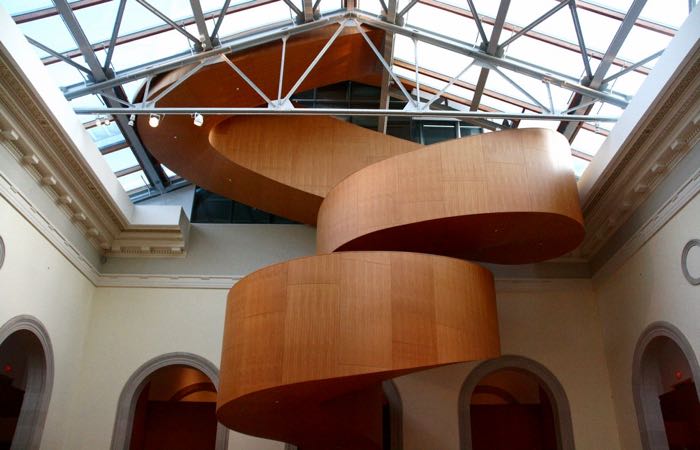
One of the largest galleries in North America, the AGO’s collection of ancient and modern art includes over 80,000 pieces. Theirs is the single largest collection of Canadian art, plus the house an extensive range of photography and contemporary art, alongside African, European, and Asian art. The building itself is a work of art, with its’ Frank Gehry-helmed redesign being labelled a masterpiece; the most notable features of this project include Galleria Italia, a glass and wood façade the runs the entire length of the city block, and an asymmetrical spiral stairwell. The AGO is open until 5:30 p.m. most nights, except for Wednesdays and Fridays until 9:00. General admission is about $20, but is free on Wednesdays after 6:00. -
MZTV Museum of Television & Archive
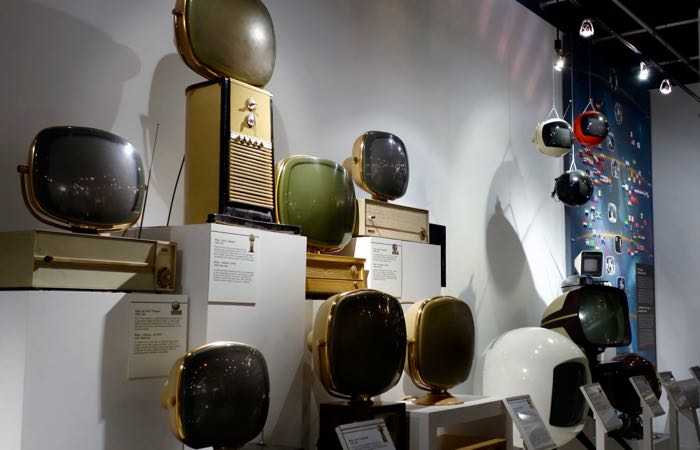
Such a cool space! MZTV offers a collection of over 10,000 items, showcasing the technological development of television, especially those ranging from the ‘20s-‘70s, as well as the TV sets themselves. Milestones in history, design, and technology are represented here, including the RCA TV set from the 1939 New York World’s Fair, the only one made in a see through case, revealing all the inner components to convince skeptics that what they were seeing was real. MZTV keeps odd hours, limited to Tuesday through Friday from 2-5 pm. -
Poutine
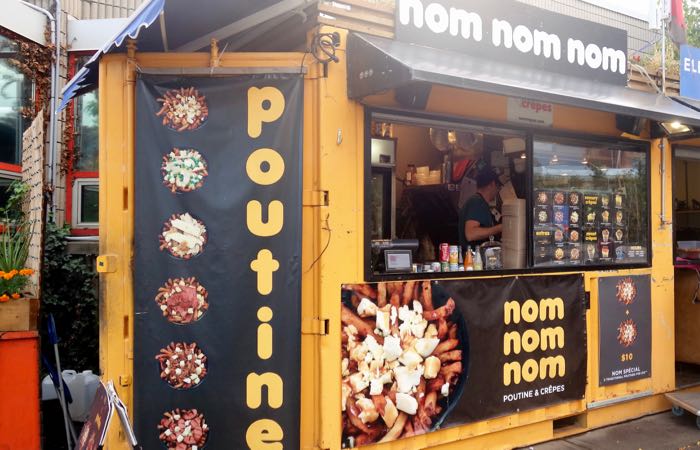
Indulge in the ultimate Canadian comfort food: poutine. With layers of French fries, cheese curds, and brown gravy, this is a decidedly decadent treat. You’ll find poutine on menus all over the city, usually with these three staple ingredients, but sometimes with different spins on the classic recipe. The best spot for traditional poutine is Nom Nom Nom, one of the shipping container food stalls in Market 707, owned by an ex-Montrealer (the dish originated in Quebec). Poutini’s House of Poutine is another great spot for authentic flavors, plus they offer a vegan version. Be sure to get your fill, as the dish is rarely found outside of Canada and the northern border cities in the U.S. -
Kensington Market
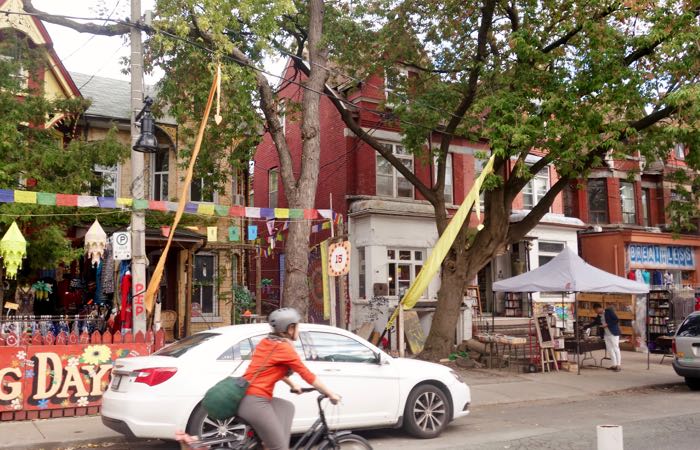
Kensington Market is an eclectic neighborhood, brimming with cafes, boutiques, and sights in and around the partially outdoor market. Originally built to house Scottish and Irish immigrant laborers in the late 1800s, the neighborhood housed a large Jewish population in the early twentieth century, and today is home to a large Chinese population, along with Central American and African immigrants. Designated a National Historic Site of Canada, the resulting mix is a collection of great restaurants, fun food trucks, and produce stalls; funky clothing shops and wild gifts from around the globe; a place where counterculture, new ideas, and artistic prowess flourish. -
Chinatown
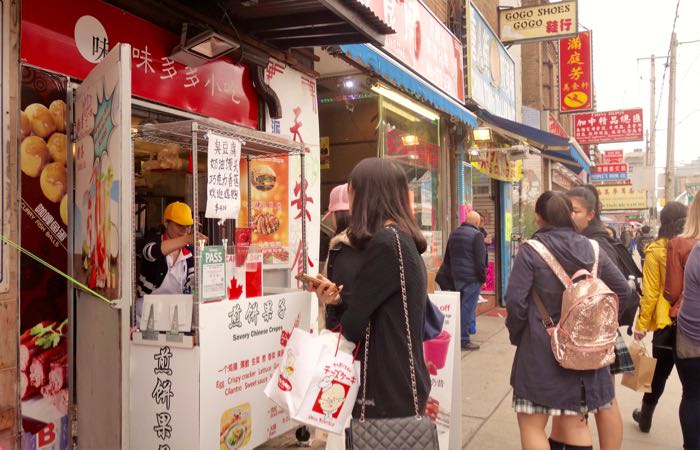
There are a few Chinatowns scattered throughout metro-Toronto, but the main one, called Old Chinatown is west of downtown Toronto. Centered around the intersection of Dundas Street West and Spadina Avenue, the area spreads out in all directions to make up one of the largest Chinatowns in North America. Historically, this population hails from southern China and Hong Kong, so Cantonese is the primary language spoken here, though recent years have seen an increase in families from mainland China, Thailand, and Vietnam. This is a great spot to spend a few hours tasting your way through the neighborhood, savoring made from scratch dim sum, rich Peking duck, and fresh baked sweets. Stock up on teas and herbal remedies, or browse through fun knickknacks. Produce, flowers, public art, and graffiti murals brighten the streets. Stop by for Chinese New Year in January or February or the Toronto Chinatown Festival in late summer to see lion dancers, martial arts performances, traditional music, and more! -
The Lockhart
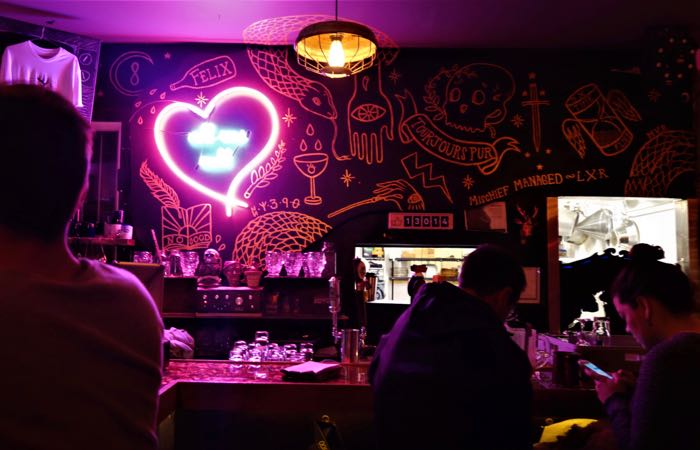
The Lockhart is a tiny, Harry Potter-themed bar in Little Portugal, just west of Trinity Bellwoods Park. Not officially affiliated with the franchise, the bar has clever nods to the Hogwarts universe without being over-the-top. Drinks on the menu include the “Gin-ney Weasley” and their version of Butterbeer, served in a pewter stein with a toasted marshmallow on top, while their tapas include playful combinations like beef and chocolate. With only 36 seats, yet over 10K Facebook followers and over 60 articles written about them since their 2015 opening, the place can get packed, especially on weekends, so either get here early or be prepared to take your drink standing. -
Market 707
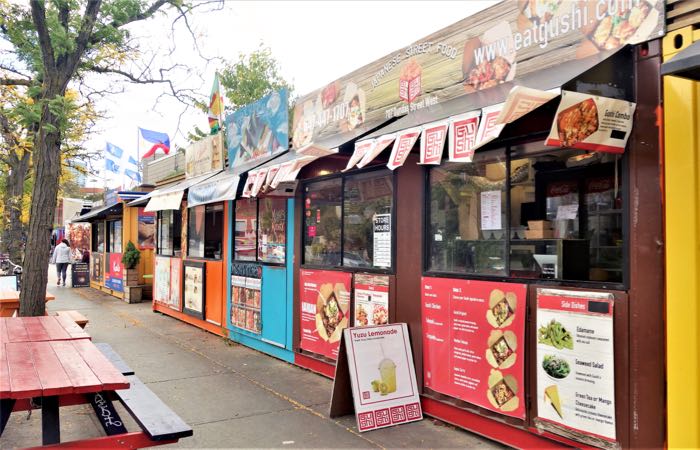
Market 707 is an innovative street food hub, where vendors serve out of repurposed shipping containers. You’ll find cuisine of all kinds here, including Filipino, Afghan, and the poutine fave Nom Nom Nom, plus sweet treats like bubble tea and macarons, all in brightly colored stalls lined up along the sidewalk. Mixed among the food vendors are a few clothing boutiques, a barbershop, and a few other specialty vendors. The market is part of a community non-profit project to help new entrepreneurs get their businesses off the ground. Located on Dundas Street West near Kensington Market. Most stalls are open until 7:00 p.m., but hours vary seasonally and depending on the business. -
Izakaya
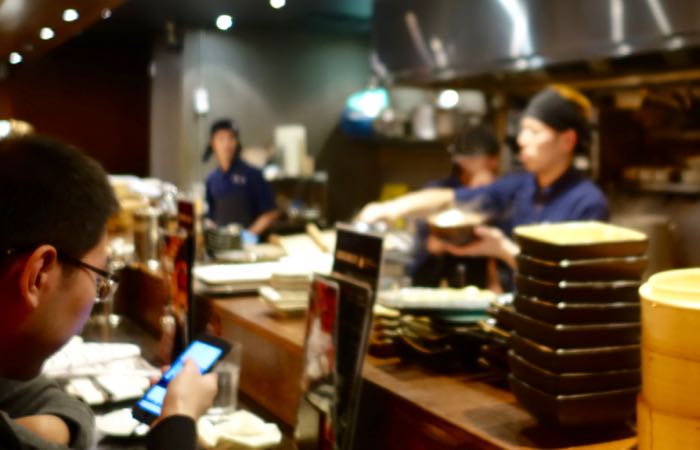
For a raucous night out, grab a drink and a bite at one of Toronto’s izakayas, informal Japanese pubs with share plates of traditional and contemporary foods, plus sake, beer, and innovative cocktails. The top two in the city, Guu and Kinka, were once under the same ownership and share a similar menu. Most noticeably, they share a similar volume, where all servers and cooks shout a greeting to each diner as they enter the restaurant, making for an incredibly energetic and noisy evening. This is best enjoyed with a friend or group, so that everyone can experience several different flavors. Izakayas make a great pre-funk for a big night out or are a fab destination on their own. -
Ice Wine
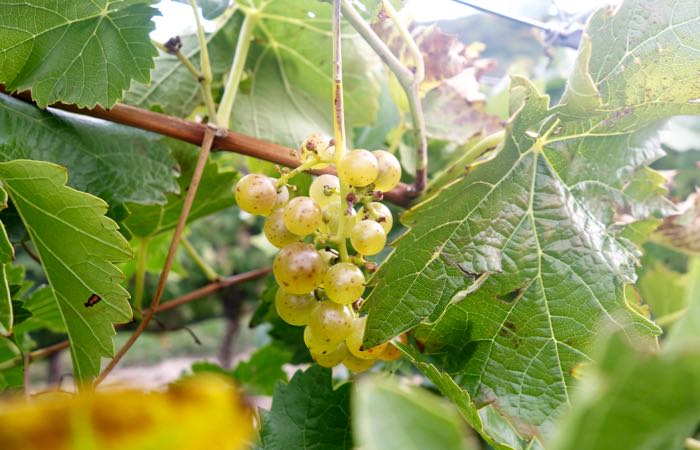
Ontario wine country is about an hour and a half south of Toronto, near Niagara Falls. The nearly one hundred wineries in the area produce several varieties, but Ontario is best known as the world’s largest producer of ice wine, a dessert wine made when grapes get frozen on the vine to produce a sweeter, more concentrated wine. This wine is tricky to make and usually expensive; the grapes must be picked and pressed within a few hours of the first freeze. Most wineries offer guided tours of the vineyards and facilities that end with a tasting. -
Taxidermy
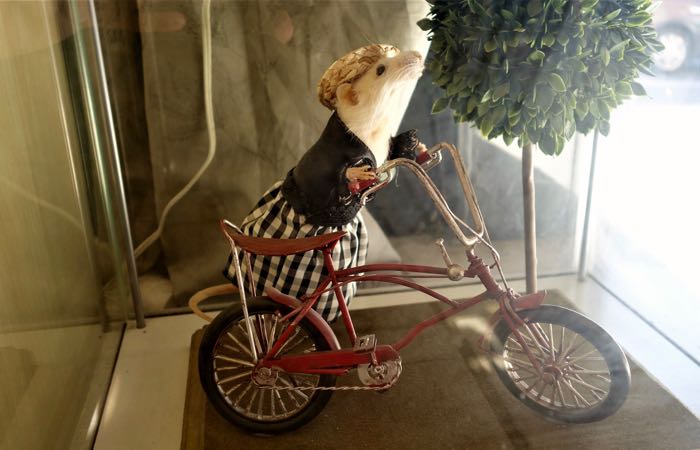
If you’re interested in something entirely different, Teta Kika offers Casual Taxidermy courses, daylong workshops covering the basics of taxidermy, using rats as models. (For those concerned, Teta Kika partners with the reptile house at the zoo. The rats used in class are feeders for the crocodiles. After being skinned in class, the meat is sent back to the zoo as food.) The course covers the basics of cutting, skinning, preserving, stuffing, and mounting. You’ll need to bring your own tiny costumes and props if you want to dress your rat up fancily. Workshops are usually on weekends and the location changes. Reservations are required. Contact Teta Kika for the latest news via the website. -
The Cineforum
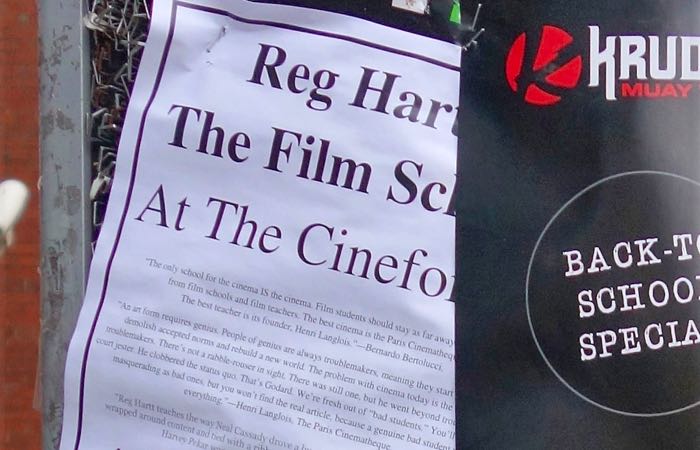
Uniquely Toronto and uniquely weird, The Cineforum is an underground movie house run out of one man’s home. Proprietor Reg Hartt, former Director of Cinema Studies at Rochdale College, has been showing and lecturing on all aspects of film since the 1960s in various locales including churches and bars but has been screening from home since ’92. Each film will be accompanied by Hartt’s own interjections (he will stop the movie to talk, but it’s always educational!) and sometimes his original soundtracks for silent films. Most movies here are old and tend toward the strange or controversial. Screenings are advertised on black and white flyers stapled to telephone poles all over the city, but the easiest way to find out the schedule is to call directly and ask at 416-603-6643. -
Throw an Axe
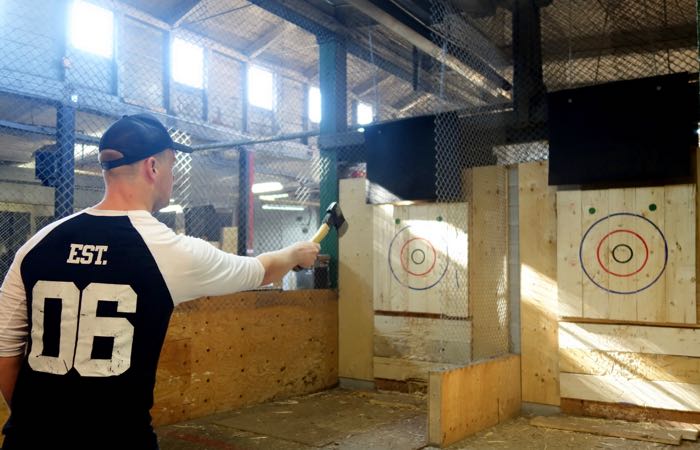
As a sport, axe-throwing started coming together in Toronto between 2006 and 2011, invented by a bartender and born out of boredom on a day too cold to swim. The game is simple, much like darts, just hurling axes at a target several meters away. The lanes are long and come in sets of two, as competitors face off side by side. There are two businesses running four locations in the city where people can throw, BATLgrounds (Backyard Axe Throwing League) and Bad Axe Throwing, both of which are BYOB. Do check their calendars ahead for scheduling, as they both have league nights and host events. -
Graffiti Alley
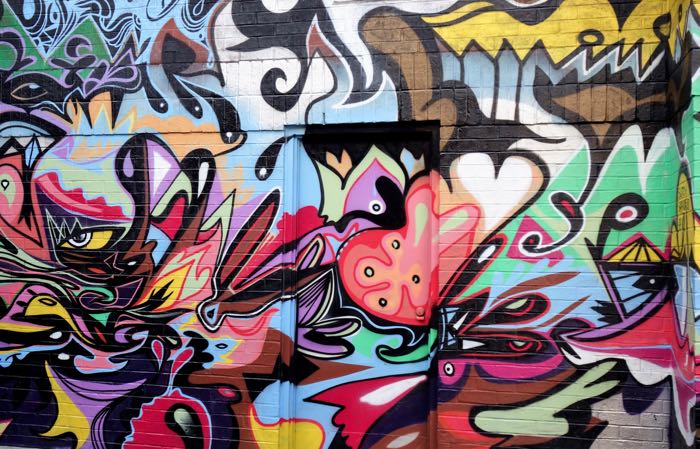
Also known as Rush Lane or Rick Mercer’s Alley. Running east-west between Spadina and Portland on the south end of Chinatown, Graffiti Alley stretches for about one kilometer and showcases piece after piece of street art. The quality varies, with some basic tagging right next to intricate murals. Colorful, creative, and often thoughtful work is sprayed onto buildings from foundation to roof, running the length of several blocks and down every side street along the way. With countless works crammed together and wrapping around corners, it takes some time to see it all, so don’t try to rush through. This is a great stop to make on the way to Chinatown, Kensington Market, or West Queen West. -
St. Lawrence Market
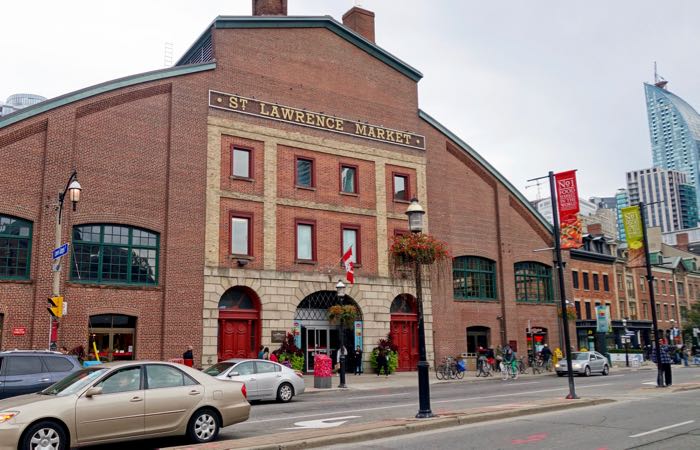
National Geographic named St. Lawrence Market the world’s best food market. Since 1803, the market has been going on in the area, originally as a weekly market under temporary cover, later in a wooden structure, and then the first brick structure (the current South Market building) popped up in 1845. The South Market houses over 120 vendors selling fresh produce, dairy, meats, baked goods, and more. The North Market hosts a farmers market on Saturdays and an antiques market on Sundays, plus other events during weekdays. The St. Lawrence Hall is mostly offices and event space. The market is closed every Monday and Sunday, except for the antiques vendors. -
Allan Gardens Conservatory
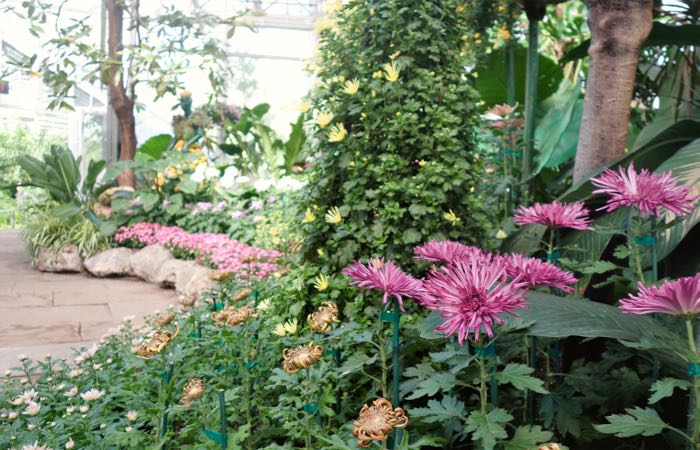
A little over 100 years old, Allan Gardens Conservatory is a striking sight with its glass domes, steel framing, and symmetrical geometry. The almost 5000 meter space contains five linked greenhouses filled with tropical plants from around the world. The central, largest, and oldest dome, the Palm House, contains the tallest plants, including bananas and pine, while two tropical houses, a cool house, and a cactus house brim with orchids, citrus trees, and more. The park is open every day of the year, with rotating seasonal exhibitions, and is always free. -
Hockey Hall of Fame
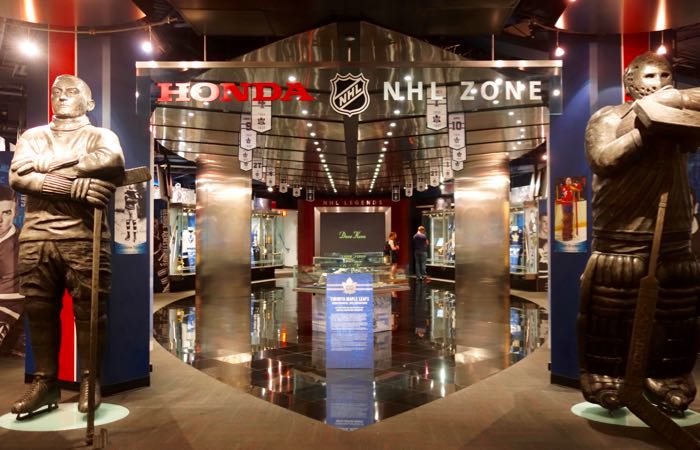
Established in 1943 and relocated to Toronto in 1958, the Hockey Hall of Fame is devoted entirely to Canada’s national winter sport, ice hockey. As a hall of fame, new members are inducted annually each November; inductees include players, coaches, commentators and others. As a museum, the HHoF’s most striking exhibit is the Great Hall, a gorgeous space designed after a cathedral and housing the original Stanley Cup plus more modern NHL trophies inside a bank vault. Interactive exhibits have visitors playing goalie against a virtual Wayne Gretsky or taking their own shots with real pucks. Open every day except Christmas and Induction Day (changes yearly, check their website) until 5:00, Saturdays until 6:00. -
Eaton Centre
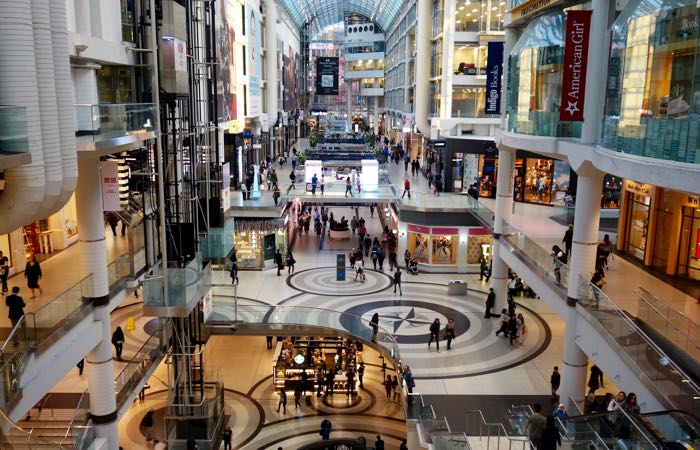
Averaging around a million visitors a week, Eaton Centre is Toronto’s largest and most visited city attraction, as well as one of North America’s most popular shopping destinations. The mall houses 330 shops and restaurants and connects to the PATH, Toronto’s underground pedestrian complex, which offers even more shops attached. Not just a retail hub, Eaton Centre is also an architectural landmark, with its skylit galleria, as well as a historical marker, with connections to Toronto’s first major department store. Don’t miss its iconic Flight Stop, a sculptural collection of 60 fiberglass geese suspended from the ceiling and viewable from multiple levels within the mall space. -
Distillery District
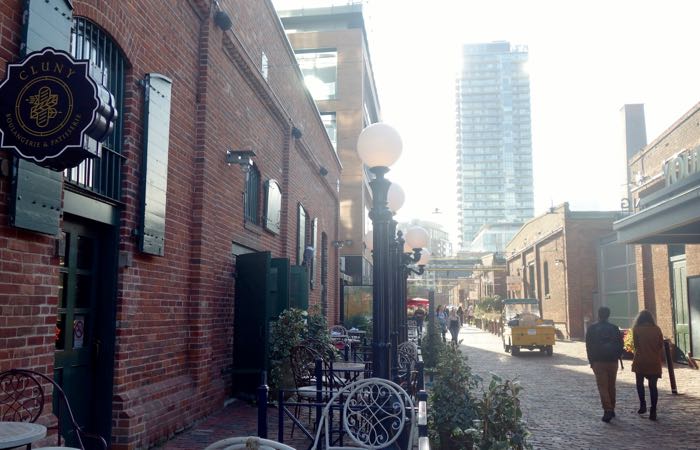
This 13 acre stretch of Toronto is the largest group of Victorian industrial buildings in North America. Once home to Gooderham and Worts, the largest distillery in the world, the Distillery District is a unique area in Toronto with plenty of boutique shops and upscale restaurants, plus a microbrewery, sake brewery and a chocolate factory. This area is designated for pedestrians and cycling only; cars and parking are allowed just at its borders. Here historic architecture meets contemporary creativity, and as such, it is a leading component in Toronto’s artistic and cultural community, with events held throughout the year. Possibly the most picturesque area in Toronto, the Distillery District is a perfect spot to spend the afternoon shopping and dining or to spend the evening celebrating. -
Rogers Centre
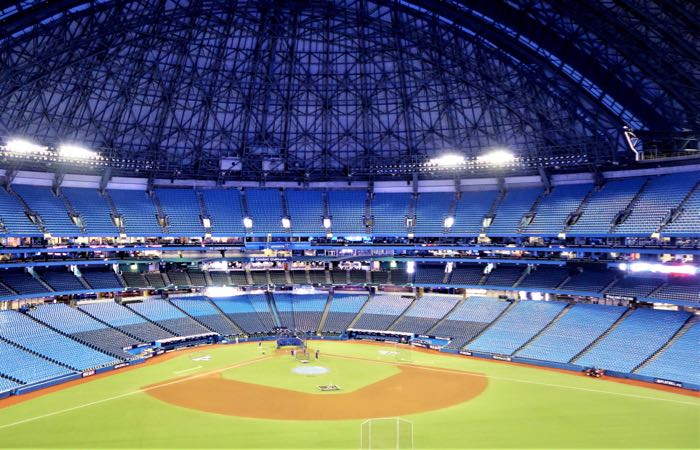
Though its name changed to Rogers Centre years ago, you’ll still hear people call it the SkyDome. Currently home of the Blue Jays, the only Major League Baseball team in Canada, Rogers Centre has housed several major sports teams over the years including the Argonauts and Raptors and continues to host concerts and events, such as Disney on Ice, Pan-Am Games, and motor sports. Their roof is the world’s first fully retractable stadium roof and takes 20 minutes to completely open or close its panels; at 86 meters, it is tall enough at its center to fully enclose a 31 story skyscraper. This is the last arena built to host both baseball and football games, though it takes about 30 hours to convert from a baseball diamond into a football field or vice versa. The Rogers Centres host about 200 games and events annually, offering plenty of opportunity to experience the arena with an energized crowd, or you can opt for a behind-the-scenes tour to get a peek into off-limits spots, like the press box. Superfans can even rent out the baseball diamond for up to four hours to play their own game there. Close to CN Tower, Ripley’s Aquarium, and Scotiabank Arena (formerly Air Canada Centre). -
Izumi Sake
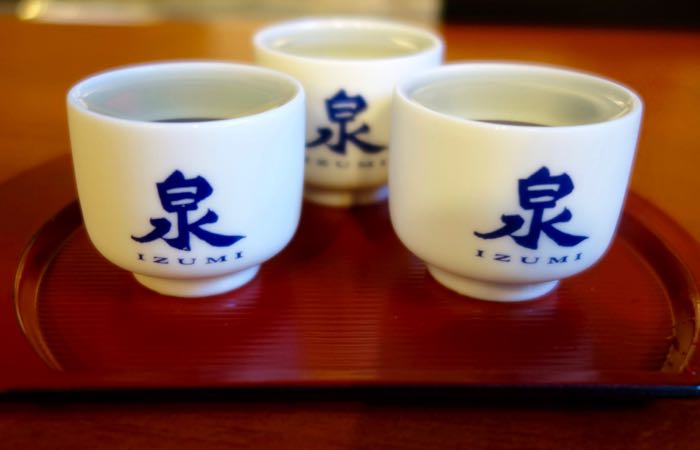
In the heart of the Distillery District, the Ontario Spring Water Sake Company is at work making fresh-pressed, unpasteurized, unfiltered sake. This is one of only a handful of sake brewing companies following traditional methods and recipes, a member of the Brewing Society of Japan. Visitors can stop by anytime for a tasting flight at the bar, or even better, stop by on the weekend for a brewery tour that includes a lesson in the sake-making process as well as a sampling of their original Izumi Sake. One hour tours are available Saturdays and Sunday at 1:00 and 3:30; visitors must be at least nineteen. The tasting bar is open until 6:00 most nights, Fridays and Saturdays until 7:00. -
Textile Museum of Canada
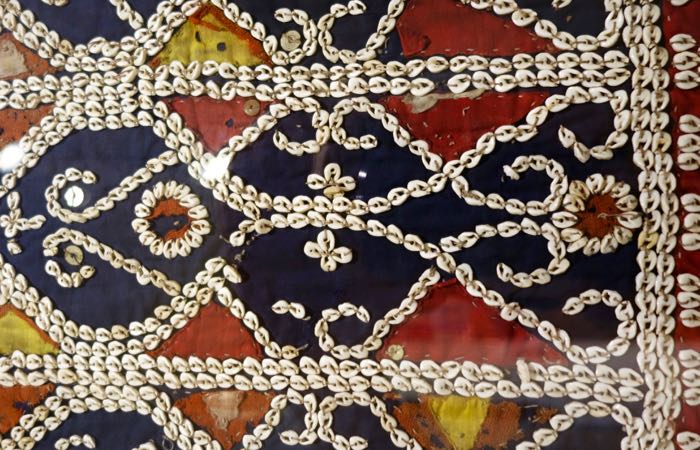
Since 1975, the Textile Museum of Canada has been a leading center for research and education on textiles, featuring speakers and interactive workshops, centered on the idea that textiles are both ubiquitous and unique, depending on their local and historical origins. The museum’s international, multi-ethnic collection reaches back nearly 2000 years with over 13,000 textiles from all over the globe, plus special traveling exhibits. The TMC’s unique group of artifacts includes quilts, clothing, beadwork, embellishments, and art. Open seven days a week, except some holidays. Admission is usually $15, except on Wednesday evenings when it’s “pay what you can.” -
Theater

Toronto’s theater scene is one of the largest in the English-speaking world, just after New York City and London. Most performances take place in the Entertainment District, many of them in landmark venues lovingly restored and managed by the Mirvish Theatre group. Take in an evening or matinee show at a vintage hall any time of the year, or plan a trip in the summer to experience a festival, featuring back to back 10 minute or one act plays on an outdoor stage. -
First Nations Food
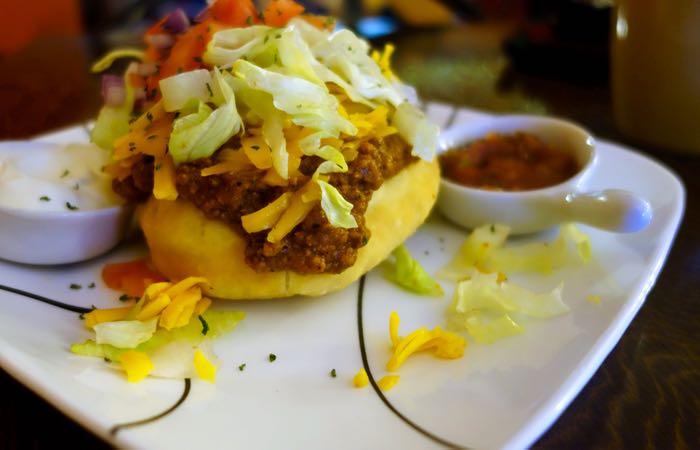
One of the best ways to connect with any culture is via food. First Nations food in Canada, includes locally sourced ingredients, such as elk, bison, maple, and salmon, as well as foods that grew out of interactions with traders and settlers, including bannock, a type of bread. Recent interest in defining a true Canadian cuisine has seen a small number of restaurants cropping up to offer Canadian aboriginal dishes. Tea N Bannock in Leslieville is one of the best in the city. NishDish Merketeria is another great spot, previously a catering and mobile joint, which just opened a brick and mortar restaurant in the north of Palmerson-Little Italy. -
Canada’s Walk of Fame
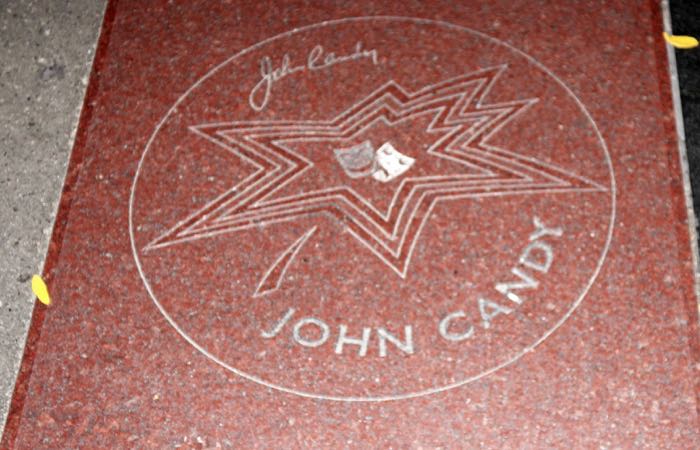
Covering 13 non-continuous blocks, Canada’s Walk of Fame honors Canadian entertainers with stars embedded in the sidewalk, similar to what you might find in Hollywood. The stars cluster around the entryways to the most iconic theaters in the city’s Entertainment District and range from actors to singers to athletes and more. It’s a ton of fun to spot your favorite pop culture icons, but the neighborhood sidewalks are densely populated day and night with people on the go, so be quick with your camera if you plan on snapping photos. -
Casa Loma
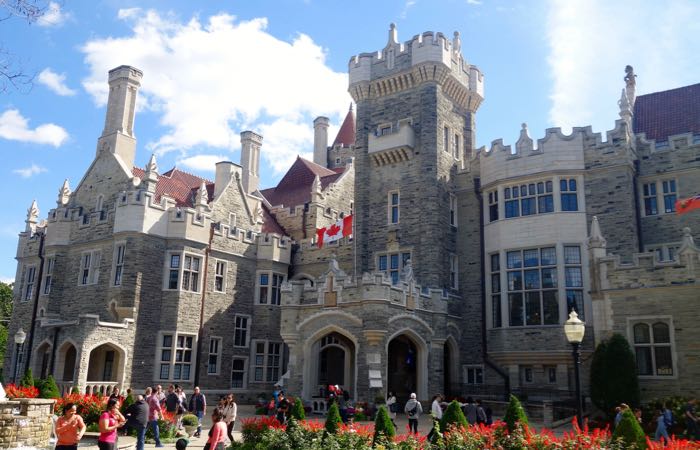
A castle in Toronto! A little over a hundred years old, Casa Loma is a landmark site, built by financier Sir Henry Mill Pellatt in the early 1900s. The castle (actually a Gothic Revival mansion) took three years to build, though the third floor was never completed, and the marble stairway that was supposed to lead up to it was lost at sea. It features secret passageways, towers, and an oven big enough to roast an entire ox. After falling on hard times, Pellatt moved out after only ten years. The castle has since been used as a hotel, Prohibition getaway for Americans, and more recently a film location (it was Hogwarts in the last Harry Potter movie, among other things). Casa Loma is open every day except Christmas. General admission is $25, and the last entry is at 4:30. -
Film Festivals
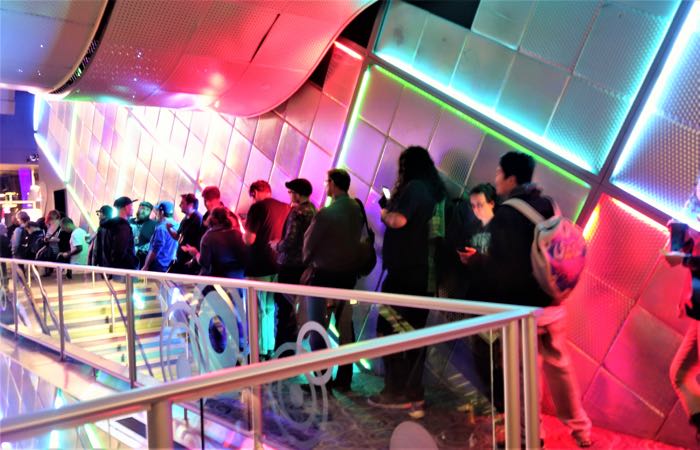
Toronto hosts several film festivals, such as Hot Docs in April (all documentaries), Toronto After Dark in October (horror, sci fi, exploitation), and Toronto International Film Festival (TIFF) in September, one of the largest in the world, attracting nearly half a million people including big name actors, directors, and other celebs. Several other niche film festivals go on year round in this urban hotbed of creativity, making almost any time a great time to catch an indie flick or two with other fans. Be sure to hit up Toronto Popcorn Company in Kensington Market first, and choose one of their 100+ flavors to munch during the movie. -
CN Tower
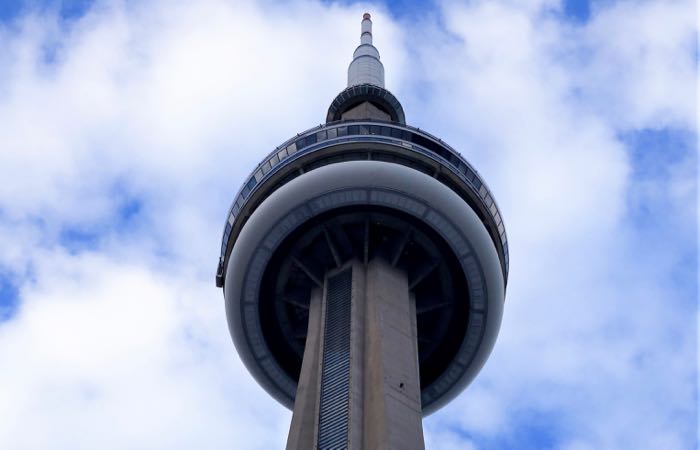
The tallest tower in the Western Hemisphere and third tallest in the world, the CN Tower is the most iconic structure in the Toronto skyline. At over 553 meters, the tower offers unmatched views of the city and harbor from its observation deck. There’s a glass floor and restaurant on the main deck and higher up (with an additional fee), the SkyPod. For a thrill, sign up for the Edge Walk, where visitors step outside, lean over, and walk the full circle around the deck. The CN Tower is open every day from 9am to 10:30pm. Admission is overpriced at $35 for general, plus another $12 for the SkyPod, but they are part of the CityPASS (along with the aquarium right next door), which alleviates some of the sting if you plan on visiting multiple attractions. -
Fort York
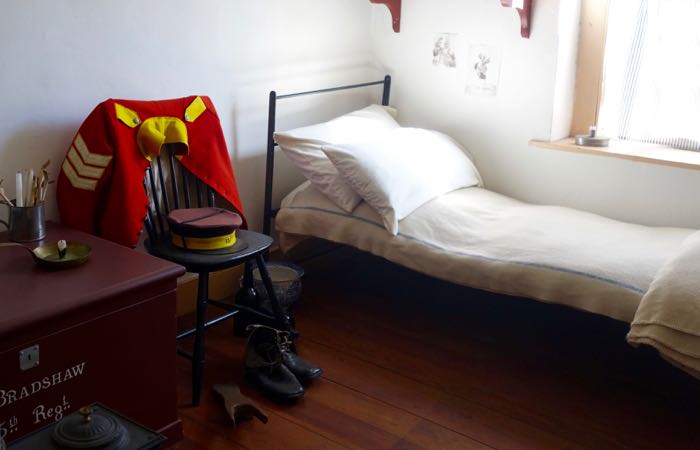
Fort York sits in western downtown, just south of West Queen West and on the harbor. This historic fort was built in 1812 by British and Canadian troops (Canada was still a colony then) as a defense against the newly independent United States. Most of the original structures were destroyed in the Battle of 1812; the buildings here were built immediately following. More recently a museum was constructed here, where visitors enter via a virtual battleground: a winding path where film reenactments of the battle are projected on walls interspersed with faux trees which act as “cover.” Guided tours by uniformed docents are available daily, but if you visit during the summer months, you can catch a demo by the Fort York Guard, featuring an artillery squad and drums. Open from 10-4 most days and only $9 for general admission. -
Yorkville
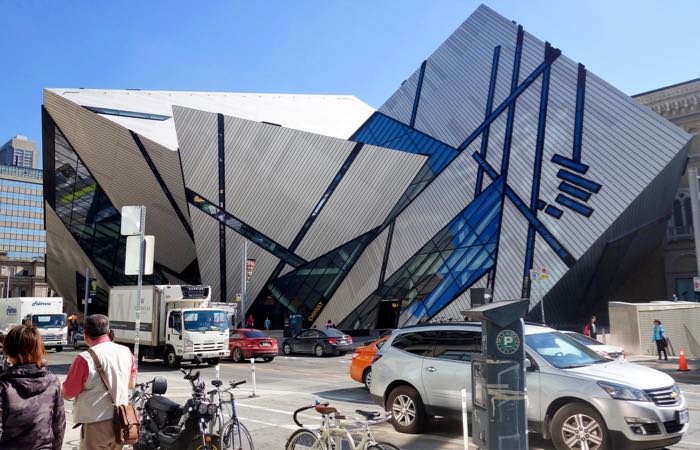
Once the countercultural capitol of Toronto, where musicians like Neil Young and Joni Mitchell got their start, Yorkville has since become the most affluent neighborhood in the city. Yorkville is home to the Mink Mile, a section of Bloor Street with the most expensive retail shopping in Canada. Here you will find luxury branded shops, including Hermes, Christian Louboutin, and Prada, though recent years have seen an influx of mid-range retailers, like BCBG and The Gap. Off the Mink Mile, though, there are still several upscale, local boutiques, designer consignment shops, art galleries, and museums, most notably the Royal Ontario and Bata Shoe Museums. Several bistros, bars, and fine dining spots line the streets, offering a great perch for people-watching, as the city’s fashionistas stroll through, wearing editorial looks as if it’s totally normal. Be sure to get your pampering in one of over a hundred spas and salons in the neighborhood. Yorkville is located north of Downtown and south of Casa Loma. -
Toronto Harbour
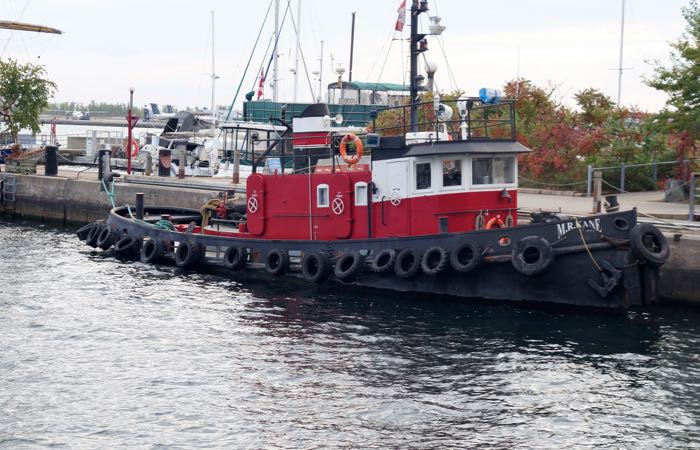
This natural bay is one of the most picturesque spots in the city. The harbor offers gorgeous views of Lake Ontario and the Toronto Islands from the shore, where visitors can walk the Wavedeck, a pathway along the waters’ edge with gradual ups and downs to mimic the wave patterns on the lake, or visit one of the parks studding the path, such as the Music Garden or Ireland Park. Kayaking, sailing, and cruising are also popular ways to spend time here, while taking in city skyline views. -
Toronto Music Garden
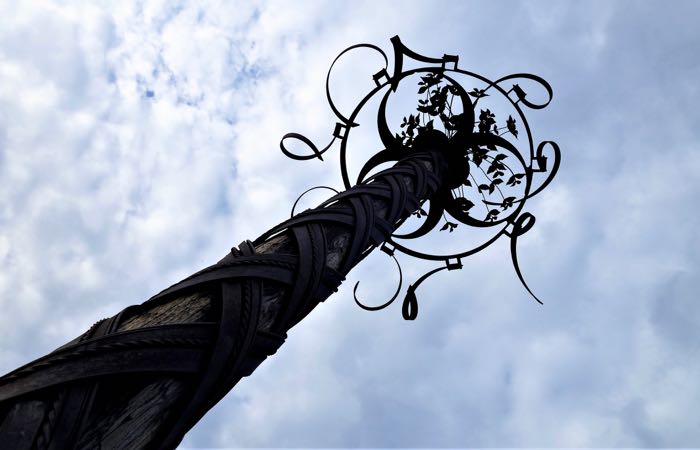
Co-designed by cellist YoYo Ma, Toronto Music Garden park is arranged so that each of six sections corresponds to a portion of “Bach’s Suite No. 1 in G Major…” and beginning with a curvy, river walk “Prelude” and ending with an oversized grass stairway “Gigue,” with flowers, a birch forest, and may pole in between. Though you won’t hear any music piped in on most days, the park does host free concerts in the summer months on Thursdays and Sundays. The Music Garden is on the harborfront, accessible year-round, and always free. -
Riverdale Farm
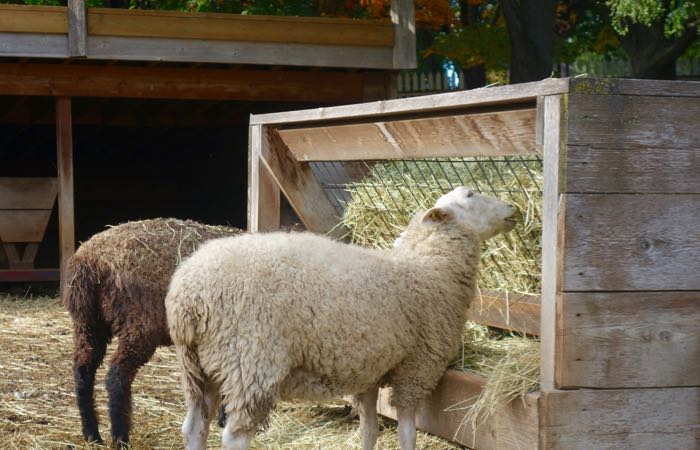
Riverdale Farm is a small farm in the Cabbagetown neighborhood just along the western side of the Don River. Perfect for all ages, the farm has goats, horses, pigs, cattle, sheep, chickens, and more, all of which are older breeds not found on commercial farms. Farmers are onsite doing chores daily, and love to answer questions and meet new people. Free to the public and open all year long, including weekends and holidays, from 9a.m. to 5p.m. daily. -
Tesla Statue
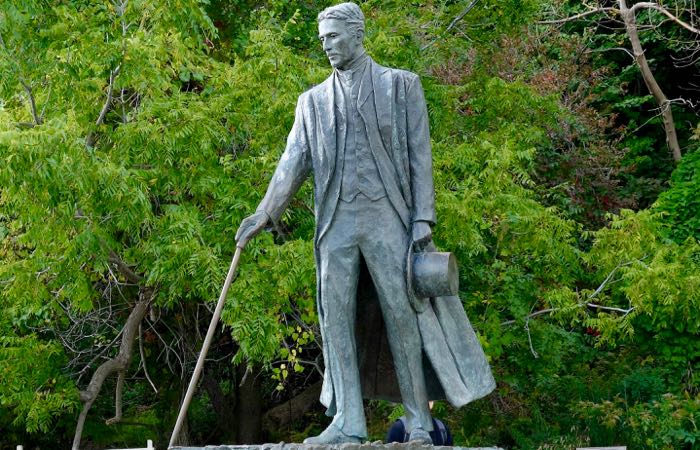
Just across the street from one of the Niagara Falls lookout points on Niagara Parkway, in front of Fallsview Casino, you’ll find a statue of Nikola Tesla, the father of hydroelectric power. He designed the first hydroelectric plant in the world at Niagara Falls. The plant generated Tesla’s alternating current, and became the definitive moment of triumph over Edison’s direct current and the beginnings of the modern era of globally available electricity. -
The Half House of St. Patrick Street
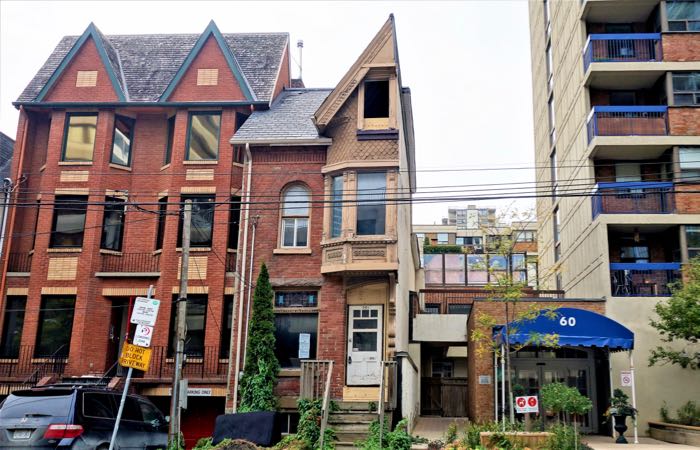
Number 54 ½ St. Patrick was once part of a row of six identical, structurally interconnected houses built sometime in the early 1890s. In the mid-twentieth century, an aggressive real estate developer began buying out properties in the neighborhood. All the other owners of these Victorian bay-and-gable homes were strong-armed into selling, except for this one. The demolition crew worked precisely, leaving the façade intact and turning an interior load-bearing wall into a new exterior. -
Ireland Park
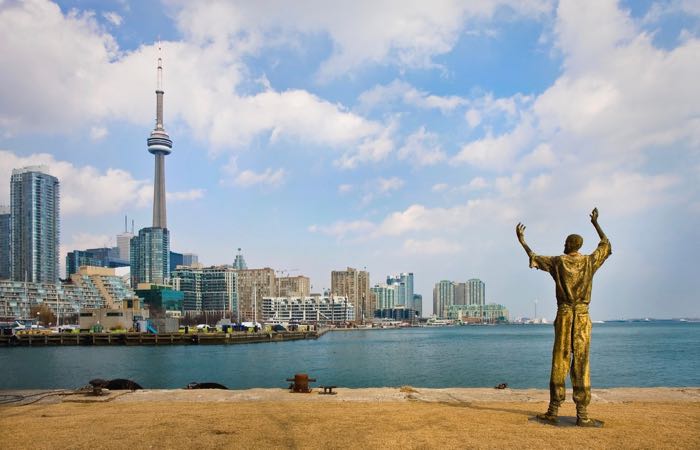
Located on the Harbourfront, just across the water from the Billy Bishop Airport on the Toronto Islands, Ireland Park is a monument honoring Irish immigrants who fled during the Great Famine. About 38,000 Irish arrived to Toronto, a city of only 20,000 at the time, in 1847. The same year, a typhus epidemic killed 1100 of those same immigrants. The park is home to five bronze sculptures of emaciated figures, collectively known as The Arrival, while a huge limestone wall has the names of the deceased carved into its surface. Powerful, emotional, and thought-provoking, Ireland Park highlights a unique and tragic piece of Toronto’s history.
photo credit
About Santorini Dave